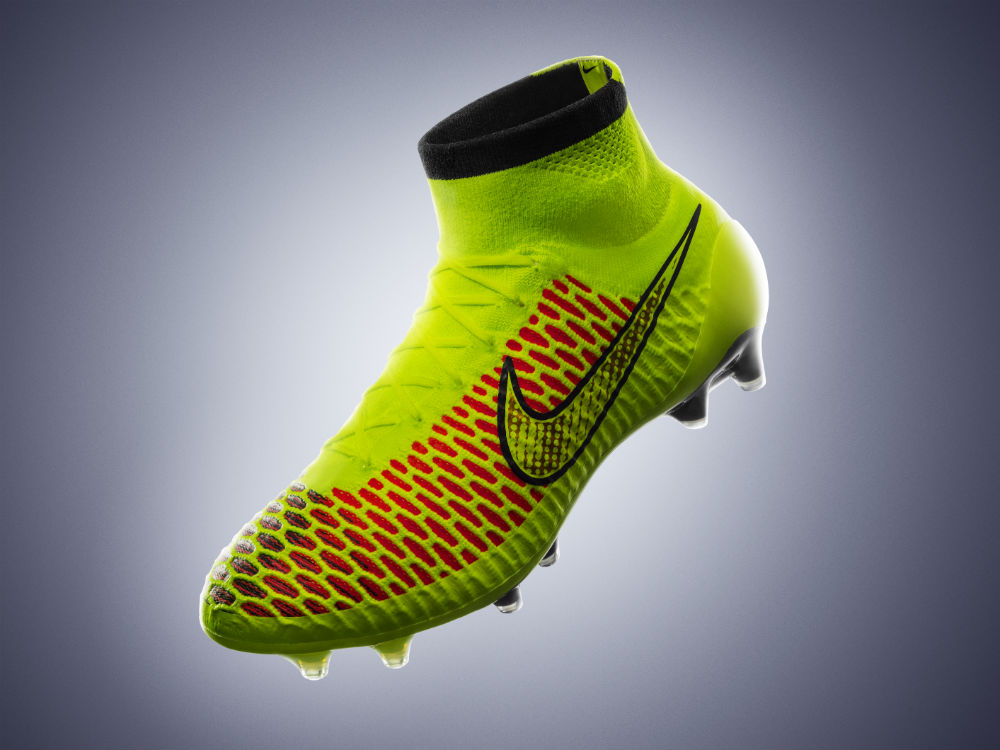
If you’ve ever kicked a soccer ball barefoot, you probably noticed a couple of things. First of all, it kind of hurts. But more importantly, you get some incredible control over the ball. As entertaining as it would be to watch professional soccer players run around on the field barefoot, that’s probably never going to happen. Nike has gotten one step closer to an athlete’s natural state with the Magista, its newest soccer boot.
Developed for the world cup, the Magista is a totally new form of boot. Nike designers spent the last four years developing the shoe, which looks like half sock, half traditional soccer shoe. It’s a strange-looking piece of footwear, but this odd form has a purpose.
Over an extensive research period, Nike designers talked to players about what was important in a shoe, and they quickly realized the game was changing significantly. Today, soccer is faster. It’s about quick moves, quick decisions and strategy, and their hope was to create a new boot to reflect this. “Players wanted no distractions,” says Denis Dekovic, Nike’s Global Football Design Director. “They wanted to be able to focus on the game.”
This meant eliminating some traditional elements of a boot, and adding others. For example, the Magista has no tongue, which can be bothersome as it moves side to side when the players run. “This also creates a unibody surface,” Dekovic says.
In its place is a stretchy sock-like material that extends up past the ankle. This Dynamic Fit Collar is meant to provide extra support for the players and make the boot feel like an extension of the leg. “The big aha moment was when we realized that we shouldn’t be designing a shoe for just the players’ foot,” he says. “The foot is integrated with the body.”
This is harder than it sounds. You can’t just stitch a sock onto a soccer shoe and call it a day. The Dynamic Fit Collar needed a just-right tightness that allows the boot to fit like a second skin while still being easy to slip on. To do this, Nike adapted its Flyknit technology for soccer for the first time, which allows the upper of the shoe to be knit, just like a sock.
The benefit of Flyknit is that every square millimeter of material can be micro-engineered, by adding in special weaves or threads. “You can transition from stretch to solid in a very smooth way,” Dekovic explains. This is what you’re seeing in the Magista, as the collar connects seamlessly to the more solid boot.

When you run your fingers on the outside of the shoe, you feel rubbery ridges. This bumpy, 3-D knit texture creates friction on the ball to ensure accurate dribbling and striking, while the rubbery feel is a waterproofing layer that’s thinner than a single sheet of paper.
Nike hopes this silhouette will be the standard for future soccer boots.But mostly, the designers are just hoping players will spend less time looking down at the ball, and more time looking ahead and making plays.

